THE D.A.S.H. DIET
Introduction
You have probably heard for years that a high-sodium diet is bad for your overall health and particularly your cardiovascular health. Even if you know this, do you know why? Very simply put, a high sodium diet is linked to higher blood pressure, and high blood pressure (clinically known as hypertension), is linked to cardiovascular disease. Before going on a medication to reduce blood pressure, or in conjunction with starting a medication, most physicians will ask you to reduce the sodium in your diet to see if that alleviates the problem. But what is a low-sodium diet? The Food and Drug Administration (fda.gov) says the following about sodium in diets:
- Know the Daily Value. The Daily Values are reference amounts of nutrients to consume or not to exceed each day. The Daily Value for sodium is less than 2,300 milligrams (mg) per day.
- Use % Daily Value (%DV) as a tool. The %DV is the percentage of the Daily Value for each nutrient in a serving of the food and shows how much of a nutrient contributes to a total daily diet.
Use %DV to determine if a serving of the food is high or low in sodium and to compare and choose foods to get less than 100% DV of sodium each day.
As a general guide: 5% DV or less of sodium per serving is considered low, and 20% DV or more of sodium per serving is considered high.
- Pay attention to servings. The nutrition information listed on the Nutrition Facts label is usually based on one serving of the food. Check the serving size and the number of servings you eat or drink to determine how much sodium you are consuming.
One diet plan to reduce blood pressure that has been well-regarded by physicians and nutritionists alike is the DASH diet. In fact, the title is an acronym for Dietary Approaches to Stop Hypertension.



What Is The DASH Diet?
Dietary Approaches to Stop Hypertension (DASH). The DASH diet was created through research funded by the National Institute of Health (NIH) to stop hypertension through diet alone. It is set up in such a way that it is a long-term plan. In other words, you could happily stay on this diet plan for your whole life as it is neither too restrictive nor skewed toward one or two of the macronutrients. When you have a diet plan that drastically reduces one of the three macronutrients (carbohydrates, protein, or fats) over the long term, you run the risk of being malnourished. The Dash diet is balanced in the ratio of macronutrients you consume on a daily basis.
- Standard DASH diet. You can consume up to 2,300 milligrams (mg) of sodium a day.
- Lower sodium DASH diet. You can consume up to 1,500 mg of sodium a day.
The standard DASH diet meets the recommendation from the Dietary Guidelines for Americans to keep daily sodium intake to less than 2,300 mg a day.
The American Heart Association recommends 1,500 mg a day of sodium as an upper limit for all adults. If you aren’t sure what sodium level is right for you, please schedule time to talk to your physician about your specific needs.
According to the Centers for Disease Control and Prevention (CDC), about half of the sodium consumed by Americans comes from the following foods:
- Breads and rolls
- Pizza
- Sandwiches (such as hamburgers, hot dogs, and submarine sandwiches)
- Cold cuts and cured meats (such as deli and packaged ham and turkey)
- Soups (particularly canned soup rather than homemade)
- Burritos and tacos
- Snack foods (such as chips, crackers, microwave popcorn, and pretzels)
- Chicken (particularly processed & fried chicken)
- Cheese (includes processed cheese)
- Condiments such as soy sauce and dips
What Can I Eat and What Can’t I Eat?
First off, always check the nutrition labels on packaged food (or a restaurant meal on their website) for the sodium content. Knowledge is power and you have this right before you at the grocery store as well as through a smartphone when eating out. See the list above for common high-sodium foods and naturally, avoid them! Choose minimally-processed foods when possible and eat more vegetables and fruit every day.
And remember, reducing sodium in your diet doesn’t mean you have to reduce flavor. Your taste buds will thank you if you use herbs, seasonings, vinegars, citrus juice and condiments in your cooking that are low in sodium but still packed with flavor.
Can Eat:
Whole Grains: 6 to 8 servings a day (on a 2,000 calorie dietary plan – reduce accordingly if you eat less than this)
Grains include bread, cereal, rice and pasta. Examples of one serving of grains include 1 slice whole-wheat bread, 1 oz dry cereal, or 1/2 cup cooked cereal, rice, barley, quinoa or pasta.Vegetables: 4 to 5 servings a day
1 cup cooked or raw is usually considered a servingFruits: 4 to 5 servings a day
Examples of one serving include one medium fruit, 1/2 cup fresh, frozen or canned fruit (prefer fresh or frozen fruit and limit canned or dried fruit)Dairy: 2 to 3 servings a day
Examples of one serving is a cup of yogurt or milk, a slice of cheese, and ½ cup of ice cream. Avoid high-sodium cheeses like cottage cheese.Lean & unprocessed meat, poultry, fish, or eggs: 6 ounces total per day for meat and 2 eggs or less per day
Cutting back on your meat portion will allow room for more vegetables. Examples of one serving include 1-2 eggs or 3-4 ounces of cooked meat, poultry or fish.Nuts, seeds and legumes (beans & peas): 4 to 5 servings a week
Examples of one serving include 1/3 cup nuts, 2 tablespoons seeds or nut butter, or 1/2 cup cooked beans or peas.Fats and oils: 2 to 3 servings a day
Having an adequate intake of good fat in your daily diet is essential to proper nutrition and cellular-level health. The bad fats, however, are to be avoided. Since the Dash diet’s goal is to reduce hypertension, a daily fat allowance is an important part of low-sodium flavor and nutrition enhancement.Examples of one serving include 1 tablespoon butter, 1 tablespoon mayonnaise, ½ avocado, or 2 tablespoons salad dressing or olive oil.
For more information, please visit www.dashdiet.org
This diet also includes 2.5 hours of exercise each week and it cuts out alcohol, which will improve overall health and expedite weight loss as well. You can choose whatever exercise you wish but focus on raising your heartrate for a minimum of 20 minutes for each session.
Can't Eat:
See the list below for common high-sodium foods and naturally, avoid them! Choose minimally-processed foods when possible and eat more vegetables and fruit every day.
- Breads and rolls
- Pizza
- Sandwiches (such as hamburgers, hot dogs, and submarine sandwiches)
- Cold cuts and cured meats (such as deli and packaged ham and turkey)
- Soups (particularly canned soup rather than homemade)
- Burritos and tacos
- Snack foods (such as chips, crackers, microwave popcorn, and pretzels)
- Chicken (particularly processed & fried chicken)
- Cheese (includes processed cheese)
- Condiments such as soy sauce and dips
Sample Recipes:

Handmade Pesto Pasta with Dr. Sotis
Handmade Pesto Pasta (Scroll to bottom to view videos) Making pasta from scratch, especially with farm eggs, has less cholesterol and a richer taste. E.A.T.

Butter Chicken Recipe
No-Butter Butter Chicken (Scroll to bottom to view video) No butter, no problem. Dr. Behnawa teaches us how to make a low-fat Indian chicken dish.

Anti-Inflammatory Scramble
Anti-Inflammatory Scramble (Scroll to bottom to view video) It’s all in the name! Dr. Ching does a step-by-step video of this anti-inflammatory breakfast option. Pin

Pesto Pasta Salad
Pesto Pasta Salad (Scroll to bottom to view video) This Pesto Pasta is loaded with grains and greens that add iron to your diet and

Cauliflower Steaks
Cauliflower Steaks (Scroll to bottom to view video) Introducing this recipe is a quick way to get more vegetables into your diet. Grilling the cauliflower
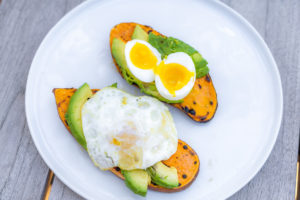
Sweet Potato Avocado Toast
Sweet Potato Avocado Toast (Scroll to bottom to view video) This “toast” supports digestion and can help manage blood sugar levels. Try this out if

Overnight Oatmeal
Overnight Oatmeal A classic made even easier! Make this the night before for a convenient on-the-go-breakfast. Add in blueberries for a boost of antioxidants. Pin

Butternut Squash Soup
Butternut Squash Soup This soup is high in potassium and has a rich flavor, plus, its not that hard to make! Enjoy as a main
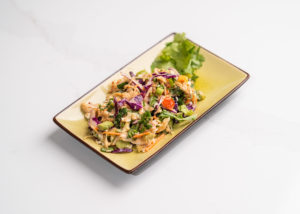
Asian Slaw
Asian Slaw Crisp, spicy and bursting with fresh flavors, this Asian slaw is chock-full of veggies with different textures that’ll make your mouth water! And

Black Bean Brownies
Black Bean Brownies (Scroll to bottom to view video) These Black Bean Brownies are dense and packed with protein! This recipe can be a pick-me-up
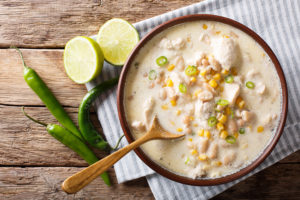
White Bean Chicken Chili
White Bean Chicken Chili This chili is hearty without weighing you down! Cannellini beans add fiber and protein, with the benefit of helping to control
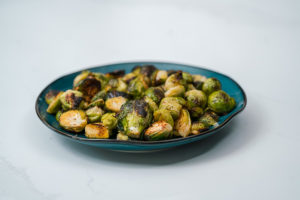
Roasted Brussel Sprouts
Roasted Brussel Sprouts If you say you don’t like Brussel sprouts, think again! Not only are these a great source of iron but roasting them
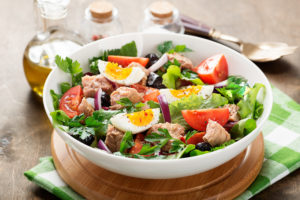
Tuna Salad Plate Recipe
Tuna Salad Plate Recipe This recipe revitalized the sometimes-mushy and bland tuna salad. Adding extra vegetables like bell peppers and cabbage rounds out the meal

Luminaries Parfait Recipe
Luminaries Parfait Recipe Low-carb and low-sugar, this is a wonderful snack or light breakfast option. Try out this parfait with different types of nuts for
